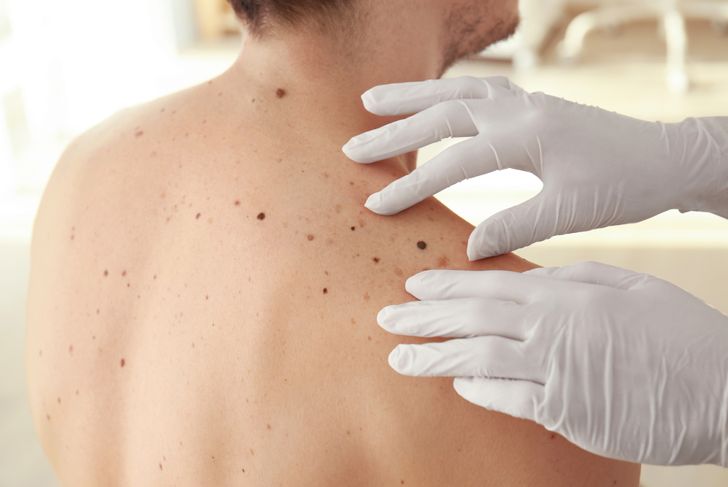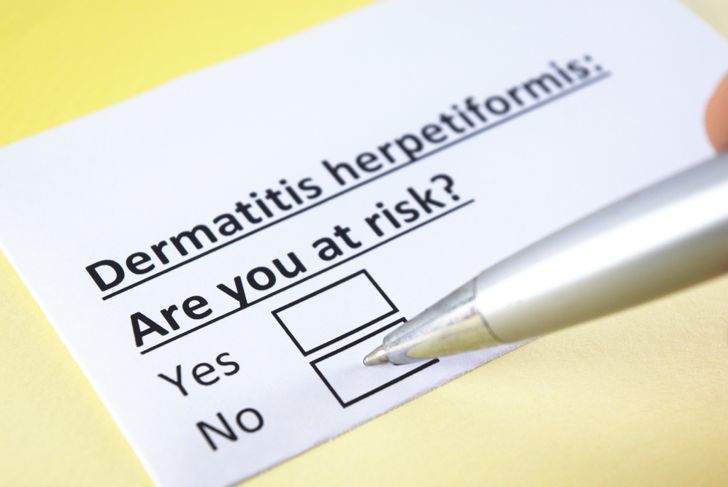Dermatitis Herpetiformis is sometimes called Duhring disease, Duhring-Brocq disease, or gluten rash. It was first described in 1884 by Dr. Louis Duhring at the University of Pennsylvania. Dermatitis Herpetiformis is an autoimmune blistering disorder that is often associated with gluten-sensitive enteropathy (GSE). About 25% of all people with celiac disease also have this skin rash, and diagnosis is more common in men than in women.
What Is Dermatitis Herpetiformis?
Dermatitis Herpetiformis (DH) is a chronic skin condition that causes blisters filled with a watery fluid. Despite the name, DH has nothing to do with the herpes virus. Rather, the name suggests inflammation of the skin, which may appear similar to herpes. The condition is a specific manifestation of celiac disease, however.
What Are Symptoms Of Dermatitis Herpetiformis?
People with Dermatitis Herpetiformis describe incredibly itchy skin and develop chronic papulovesicular eruptions or red blisters. The bumps are distributed symmetrically on areas such as the buttocks, elbows, knees, back, groin, hairline, back of neck, scalp, and face, particularly the mouth and lips. The symptoms range from mild to severe but are likely to disappear if you avoid ingesting gluten and follow the appropriate treatment.
How Does Someone Develop Dermatitis Herpetiformis?
Someone with Dermatitis Herpetiformis cannot pass it along to someone else; it is not contagious. DH often occurs in people with celiac disease, which is also called celiac sprue, gluten intolerance, or gluten-sensitive enteropathy. If you already have celiac disease or think you may have it, seek medical attention for diagnosis and treatment options.
What Causes Dermatitis Herpetiformis?
Dermatitis Herpetiformis is caused by celiac disease, which is an autoimmune disorder that creates an intolerance to gluten. If people in your family have celiac disease, you may develop it as well. The rash can start in childhood, but it usually shows up in young adults. You might not even know you have the condition until your 20s or 30s.
When Should You See A Doctor?
You should seek medical attention as soon as you start experiencing the symptoms stated previously. Depending on the severity of the Dermatitis Herpetiformis, you and your doctor will determine treatment options. After beginning treatment, you can also gauge how quickly the blisters will clear up. In general, the sooner the condition is addressed, the better the outcome and recovery.
How Do Doctors Diagnose Dermatitis Herpetiformis?
To diagnose DH, you’ll likely need a skin biopsy. The doctor takes a small sample of the affected skin and examines it. Sometimes a direct immunofluorescence test is done, in which the doctor stains the skin around the rash with a dye that shows the presence of IgA antibody deposits. Blood tests to check for these antibodies may also inform a diagnosis. Furthermore, an intestinal biopsy can confirm the presence of damage due to celiac disease.
Treatment Options
Your doctor can help you treat Dermatitis Herpetiformis with antibiotics, although certain medications can cause mild to severe side effects. The most effective treatment that has no side effects is following a strict gluten-free diet. This lifestyle change means avoiding beverages, food, or medications containing wheat, rye, barley, or oats.
Who’s More Prone To Developing Dermatitis Herpetiformis?
Although celiac disease can affect anyone, it tends to be more common in people who have another family member with the same condition. More women than men have celiac disease, but men are more likely to develop Dermatitis Herpetiformis. Also, people who have autoimmune thyroid disease, type 1 diabetes, lupus, and Sjogren’s syndrome are at a higher risk of developing the condition.
Can Doctors Prevent Dermatitis Herpetiformis?
There is no known way to prevent Dermatitis Herpetiformis, but you can prevent symptoms by avoiding foods that contain gluten. Sticking to a gluten-free diet can reduce the number of medications needed to manage the disease. Even though there is no cure, if you adhere to a proper diet and take prescriptions as directed, you can help keep the condition under control.
How Does Dermatitis Herpetiformis Affect Everyday Life?
Sometimes, maintaining a strict gluten-free diet is easier said than done. Even though taking medications every day can be irritating, at times it might be hard for you to skip your favorite gluten foods. However, if you want to keep the symptoms of Dermatitis Herpetiformis under control, you may have to forego some former staples. If you do have a flare-up, you may have to deal with discomfort and itchiness; but that should go away, along with the rash, in time.

 Home
Home Health
Health Diet & Nutrition
Diet & Nutrition Living Well
Living Well More
More




















